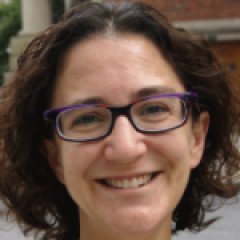Can We Move Past Market-Oriented "Reforms" to Policies That Actually Work?
For over a decade now, a group of self-proclaimed reformers has argued that, notwithstanding a lack of research-based evidence to support their claims, we should put our trust -- and our public money -- in their policy agenda. School district leaders like Michelle Rhee, Joel Klein, Arne Duncan, and the mayors who backed them, would have us believe that virtually all it takes to close stubborn race- and income-based achievement gaps is evaluating teachers and schools on the basis of student test scores, closing schools that are deemed "under-performing," and replacing "failing schools" with charter schools. With the backing of the Obama Administration and organized, well-funded advocacy groups like Rhee's StudentsFirst, as well as Stand for Children, Democrats for Education Reform, 50CAN, and others, these "reforms" are starting to look more like the new status quo.
A new comprehensive assessment by the Broader, Bolder Approach to Education of these reform efforts over the past ten years should do more than call into question their logic and efficacy. It should put to rest, once and for all, the notion that opportunity gaps with their roots in family and community poverty can be addressed through quick-fix reforms that treat low-income and minority students differently from others, and that stop short at school walls.
The report employs reliable, publicly available data that are comparable across school districts and years to compare student and systemic outcomes in the three "model" reform cities -- Washington, D.C., New York City, and Chicago -- with those in their large, low-income, heavily minority counterparts. The reform cities were all led by strong leaders who enjoyed the backing of mayors who controlled the schools and enjoyed spending increases that would be very difficult to replicate today. In other words, if any district could deliver on its reform promises, these three would have.
Yet they did just the opposite. Across the three districts, test scores from the National Assessment of Educational Progress -- NAEP -- rose less than in their urban counterparts, in many cases substantially so. And where gains were found, they accrued heavily to the non-minority, higher-income students who were already far ahead, not to the low-income black and Hispanic students who were the purported beneficiaries of these reforms. Of the ten school districts that participated in NAEP's Trial Urban District Assessment (TUDA) study in 2003, New York City ranked second-to-last. Its students gained an average of only 4.3 points from 2003 to 2011, averaged across math and reading in grades 4 and 8. This contrasts with an average TUDA district gain of 8.8. Only Cleveland's students gained less, one point. Across the TUDA districts, African-American eighth graders gained an average 5 points in reading, while their DCPS counterparts lost two points (4 points if charter school students are included in the calculation). In Chicago, minority CPS elementary school students lost ground in both reading and math between 2003 and 2011, while their counterparts in other large, urban districts, gained relative to their non-minority peers.
The damage did not stop at the individual student level, however. The high stakes attached to state test scores not only did not raise those scores, they drove away experienced and strong new teachers. In Washington, attrition rates rose such that over half of all teachers were leaving after just four years. The highest-poverty DCPS schools are increasingly staffed by novices who are ill-equipped to deal with the added challenges they present. Chicago teachers won a lawsuit that accused CPS of systematically replacing experienced, qualified teachers with lower-paid, non-minority novices. And eight New York State Teachers of the Year implored the State Board of Regents not to increase teacher evaluations' reliance on test scores, explaining the multiple ways through which they pose disincentives for teachers like them to work with students who need them most.
Finally, school closures neither improved outcomes for students nor saved the districts money. Only 6 percent of CPS students whose "under-performing" schools were shuttered moved to others that boosted their performance. New York City students who obtained slots in the new small schools benefited from supportive relationships with qualified teachers and engaging, hands-on educational experiences. But the majority, for whom that option was not available, went to other large high schools, many of which became overwhelmed by large numbers of special education students and English Language Learners and were soon, themselves, deemed "failing" and slated for closure. Michelle Rhee's estimated $23 million in savings from closing 23 DC schools in 2008 ended up costing $40 million, and the students who left those schools ended up in others that had even lower average test scores.
It has been a decade since reformers promised a swift solution to America's most challenging education problems. Instead of results, we have gotten rhetoric, and our children have fallen further behind. It is time we adopt policy solutions that match the depth and complexity of the problems and address them head on.
This blog post has been shared by permission from the author.
Readers wishing to comment on the content are encouraged to do so via the link to the original post.
Find the original post here:
The views expressed by the blogger are not necessarily those of NEPC.
